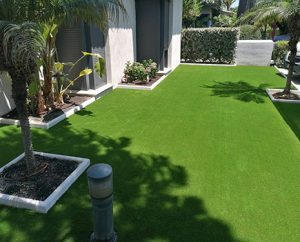Consider one of these three other clear finishes for your next project. If the cedar has insect damage, rot, or the % of the cuts include heartwood versus sapwood. Knots prove prevalent in lower grades, though "clear" grades are available. The wood is awfully soft, so youd definitely be faced with a lot of dents and dings. The specific links on this site are affiliate links (as an Amazon Associate I earn from qualifying purchases) and help support the site at no extra cost to you. Sources: Find knotty grades in dimensional sizes at home centers and lumber yards; clear grades at hardwood dealers. They are a monoecious species which reproduce via wind-based pollen and seed dispersal. Lumber from these cedars is highly resistant to rot and, therefore, has many uses in the timber industry. You can find these trees around the United States, where people have brought them in and planted them. The pollen cones are often located on the end of these twigs as shown in later pictures. The aromatic leaves emit a pineapple scent when crushed. Color/Appearance:Heartwood is typically reddish brown. In these pictures: Cedrus Atlantica Glauca Pendula (left) and Cedrus Atlantica Aurea (right). The most important two main factors that affect the quality of fence pickets is the thickness of the picket, and the environment they are shipped in and stored in. The timber is fragrant, weather and insect resistant, soft, strong, and has a very low density, which makes it useful for furniture making and home construction. The wood tends to be brittle, tearing out without sharp cutters and backer boards. Fill out the form provided below and we will contact you, or call us now, 2019 A Better Fence Company Aubrey, TX 76227 (940)220-9099 . It's made up of strong PVC compounds that contribute to fencing being able to endure forever and be everlasting. Alaskan yellow cedar can be identified by its droopy branches, small cones and grayish brown bark. Many dwarf western cedar cultivars make this tree ideal for residential landscapes. What kind of leaves does a cedar tree have? For example, some fences might be affordable and might look good while theyre still new, but once you buy them, youll see that problems will arise. A mature cedar tree has reddish-brown bark with long scales that are easily peeled. Eastern Red Cedar leaves are similar to Western Red Cedar in that they are scale-like and form "fingers." However, they go all around the stem, rather than just forming opposite pairs. ), You can help support the site by buying one of these resources, designed and published by The Wood Database. It looks like a smaller version of its larger cousin, the Lebanon cedar. Identification of Alaskan yellow cedars is by their dark green, flat scaly leaves growing on pendulous branches. You can see easily with your eyes how crappy the western red cedar pickets are with 80+% of them having the white sapwood and very little of the heartwood- the reverse of the Japanese Cedar. When referring to boards, dimensions are approximations, however a 1 x 4 Western Red Cedar board is typically closer to a true 1 thickness, while Chinese Cedar is closer to 3/4 thick. endstream endobj 30 0 obj <> endobj 31 0 obj <>/ExtGState<>/Font<>/Pattern<>/ProcSet[/PDF/Text/ImageC]/Shading<>/XObject<>>>/Rotate 0/TrimBox[0.0 0.0 612.0 792.0]/Type/Page>> endobj 32 0 obj <> endobj 33 0 obj <> endobj 34 0 obj [/ICCBased 52 0 R] endobj 35 0 obj [/Pattern] endobj 36 0 obj <> endobj 37 0 obj <> endobj 38 0 obj <> endobj 39 0 obj <> endobj 40 0 obj <> endobj 41 0 obj <> endobj 42 0 obj <> endobj 43 0 obj <> endobj 44 0 obj <>stream |}Y*KOru*Y|tjipvl'oFAL^0Z SlK+a^W7Y The wood splits easily--hence, it is commonly used for split singles and shakes. Good Luck. There are four species of cedar trees in the genus Cedrus, belonging to the pine (Pinaceae) family. Before you choose any species, you need to consider the quality of the wood first. When referring to boards, dimensions are approximations, however a 1 x 4 Western Red Cedar board is typically closer to a true 1 thickness, while Chinese Cedar is closer to 3/4 thick. These juniper species are hardy trees that can withstand hard conditions, including periods of drought. This species of cypress can be identified by its soft green, feathery foliage and drooping branches. Know How to Spot the Difference! You can identify eastern red cedars by the spiky immature bright-green needle leaves that become scale-like as the tree matures. Real cedar wood is very waterproof and when submerge in water it increases in hardness. The sapwood is narrow and almost white. When using this fence you have to put a solid stain on it because its more of hardwood and it doesnt allow the other stain types to penetrate. Donating wood samples and pictures of wood itemsIf youve got a new or unusual wood species that isnt on the site, please consider sharing it with the rest of us! Moderate natural luster. Workability:Generally easy to work with hand or machine tools, though knotty areas can be troublesome. I have planted si? Like most cedars, the wood is soft, light, aromatic, and resistant to decay. {"smallUrl":"https:\/\/www.wikihow.com\/images\/thumb\/d\/d1\/Identify-Cedar-Trees-Step-1.jpg\/v4-460px-Identify-Cedar-Trees-Step-1.jpg","bigUrl":"\/images\/thumb\/d\/d1\/Identify-Cedar-Trees-Step-1.jpg\/aid10122095-v4-728px-Identify-Cedar-Trees-Step-1.jpg","smallWidth":460,"smallHeight":345,"bigWidth":728,"bigHeight":546,"licensing":"
License: Creative Commons<\/a> License: Creative Commons<\/a> License: Creative Commons<\/a> License: Creative Commons<\/a> License: Creative Commons<\/a> License: Creative Commons<\/a> License: Creative Commons<\/a> License: Creative Commons<\/a> License: Creative Commons<\/a> License: Creative Commons<\/a> License: Creative Commons<\/a> License: Creative Commons<\/a> License: Creative Commons<\/a> License: Creative Commons<\/a> License: Creative Commons<\/a>
\n<\/p>
\n<\/p><\/div>"}, {"smallUrl":"https:\/\/www.wikihow.com\/images\/thumb\/3\/3d\/Identify-Cedar-Trees-Step-2.jpg\/v4-460px-Identify-Cedar-Trees-Step-2.jpg","bigUrl":"\/images\/thumb\/3\/3d\/Identify-Cedar-Trees-Step-2.jpg\/aid10122095-v4-728px-Identify-Cedar-Trees-Step-2.jpg","smallWidth":460,"smallHeight":345,"bigWidth":728,"bigHeight":546,"licensing":"
\n<\/p>
\n<\/p><\/div>"}, {"smallUrl":"https:\/\/www.wikihow.com\/images\/thumb\/d\/dc\/Identify-Cedar-Trees-Step-3.jpg\/v4-460px-Identify-Cedar-Trees-Step-3.jpg","bigUrl":"\/images\/thumb\/d\/dc\/Identify-Cedar-Trees-Step-3.jpg\/aid10122095-v4-728px-Identify-Cedar-Trees-Step-3.jpg","smallWidth":460,"smallHeight":345,"bigWidth":728,"bigHeight":546,"licensing":"
\n<\/p>
\n<\/p><\/div>"}, {"smallUrl":"https:\/\/www.wikihow.com\/images\/thumb\/8\/8f\/Identify-Cedar-Trees-Step-4.jpg\/v4-460px-Identify-Cedar-Trees-Step-4.jpg","bigUrl":"\/images\/thumb\/8\/8f\/Identify-Cedar-Trees-Step-4.jpg\/aid10122095-v4-728px-Identify-Cedar-Trees-Step-4.jpg","smallWidth":460,"smallHeight":345,"bigWidth":728,"bigHeight":546,"licensing":"
\n<\/p>
\n<\/p><\/div>"}, {"smallUrl":"https:\/\/www.wikihow.com\/images\/thumb\/1\/16\/Identify-Cedar-Trees-Step-5.jpg\/v4-460px-Identify-Cedar-Trees-Step-5.jpg","bigUrl":"\/images\/thumb\/1\/16\/Identify-Cedar-Trees-Step-5.jpg\/aid10122095-v4-728px-Identify-Cedar-Trees-Step-5.jpg","smallWidth":460,"smallHeight":345,"bigWidth":728,"bigHeight":546,"licensing":"
\n<\/p>
\n<\/p><\/div>"}, {"smallUrl":"https:\/\/www.wikihow.com\/images\/thumb\/8\/8b\/Identify-Cedar-Trees-Step-6.jpg\/v4-460px-Identify-Cedar-Trees-Step-6.jpg","bigUrl":"\/images\/thumb\/8\/8b\/Identify-Cedar-Trees-Step-6.jpg\/aid10122095-v4-728px-Identify-Cedar-Trees-Step-6.jpg","smallWidth":460,"smallHeight":345,"bigWidth":728,"bigHeight":546,"licensing":"
\n<\/p>
\n<\/p><\/div>"}, {"smallUrl":"https:\/\/www.wikihow.com\/images\/thumb\/9\/91\/Identify-Cedar-Trees-Step-7.jpg\/v4-460px-Identify-Cedar-Trees-Step-7.jpg","bigUrl":"\/images\/thumb\/9\/91\/Identify-Cedar-Trees-Step-7.jpg\/aid10122095-v4-728px-Identify-Cedar-Trees-Step-7.jpg","smallWidth":460,"smallHeight":345,"bigWidth":728,"bigHeight":546,"licensing":"
\n<\/p>
\n<\/p><\/div>"}, {"smallUrl":"https:\/\/www.wikihow.com\/images\/thumb\/2\/21\/Identify-Cedar-Trees-Step-8.jpg\/v4-460px-Identify-Cedar-Trees-Step-8.jpg","bigUrl":"\/images\/thumb\/2\/21\/Identify-Cedar-Trees-Step-8.jpg\/aid10122095-v4-728px-Identify-Cedar-Trees-Step-8.jpg","smallWidth":460,"smallHeight":345,"bigWidth":728,"bigHeight":546,"licensing":"
\n<\/p>
\n<\/p><\/div>"}, {"smallUrl":"https:\/\/www.wikihow.com\/images\/thumb\/0\/0a\/Identify-Cedar-Trees-Step-9.jpg\/v4-460px-Identify-Cedar-Trees-Step-9.jpg","bigUrl":"\/images\/thumb\/0\/0a\/Identify-Cedar-Trees-Step-9.jpg\/aid10122095-v4-728px-Identify-Cedar-Trees-Step-9.jpg","smallWidth":460,"smallHeight":345,"bigWidth":728,"bigHeight":546,"licensing":"
\n<\/p>
\n<\/p><\/div>"}, Iowa State University Extension and Outreach, Iowa State University's Extension and Outreach program dedicated to educating and engaging communities, {"smallUrl":"https:\/\/www.wikihow.com\/images\/thumb\/d\/d0\/Identify-Cedar-Trees-Step-10.jpg\/v4-460px-Identify-Cedar-Trees-Step-10.jpg","bigUrl":"\/images\/thumb\/d\/d0\/Identify-Cedar-Trees-Step-10.jpg\/aid10122095-v4-728px-Identify-Cedar-Trees-Step-10.jpg","smallWidth":460,"smallHeight":345,"bigWidth":728,"bigHeight":546,"licensing":"
\n<\/p>
\n<\/p><\/div>"}, {"smallUrl":"https:\/\/www.wikihow.com\/images\/thumb\/4\/4f\/Identify-Cedar-Trees-Step-11.jpg\/v4-460px-Identify-Cedar-Trees-Step-11.jpg","bigUrl":"\/images\/thumb\/4\/4f\/Identify-Cedar-Trees-Step-11.jpg\/aid10122095-v4-728px-Identify-Cedar-Trees-Step-11.jpg","smallWidth":460,"smallHeight":345,"bigWidth":728,"bigHeight":546,"licensing":"
\n<\/p>
\n<\/p><\/div>"}, {"smallUrl":"https:\/\/www.wikihow.com\/images\/thumb\/e\/ee\/Identify-Cedar-Trees-Step-12.jpg\/v4-460px-Identify-Cedar-Trees-Step-12.jpg","bigUrl":"\/images\/thumb\/e\/ee\/Identify-Cedar-Trees-Step-12.jpg\/aid10122095-v4-728px-Identify-Cedar-Trees-Step-12.jpg","smallWidth":460,"smallHeight":345,"bigWidth":728,"bigHeight":546,"licensing":"
\n<\/p>
\n<\/p><\/div>"}, {"smallUrl":"https:\/\/www.wikihow.com\/images\/thumb\/2\/2f\/Identify-Cedar-Trees-Step-13.jpg\/v4-460px-Identify-Cedar-Trees-Step-13.jpg","bigUrl":"\/images\/thumb\/2\/2f\/Identify-Cedar-Trees-Step-13.jpg\/aid10122095-v4-728px-Identify-Cedar-Trees-Step-13.jpg","smallWidth":460,"smallHeight":345,"bigWidth":728,"bigHeight":546,"licensing":"
\n<\/p>
\n<\/p><\/div>"}, {"smallUrl":"https:\/\/www.wikihow.com\/images\/thumb\/0\/00\/Identify-Cedar-Trees-Step-14.jpg\/v4-460px-Identify-Cedar-Trees-Step-14.jpg","bigUrl":"\/images\/thumb\/0\/00\/Identify-Cedar-Trees-Step-14.jpg\/aid10122095-v4-728px-Identify-Cedar-Trees-Step-14.jpg","smallWidth":460,"smallHeight":345,"bigWidth":728,"bigHeight":546,"licensing":"
\n<\/p>
\n<\/p><\/div>"}, {"smallUrl":"https:\/\/www.wikihow.com\/images\/thumb\/a\/a5\/Identify-Cedar-Trees-Step-15.jpg\/v4-460px-Identify-Cedar-Trees-Step-15.jpg","bigUrl":"\/images\/thumb\/a\/a5\/Identify-Cedar-Trees-Step-15.jpg\/aid10122095-v4-728px-Identify-Cedar-Trees-Step-15.jpg","smallWidth":460,"smallHeight":345,"bigWidth":728,"bigHeight":546,"licensing":"
\n<\/p>
\n<\/p><\/div>"}, {"smallUrl":"https:\/\/www.wikihow.com\/images\/thumb\/1\/1f\/Identify-Cedar-Trees-Step-16.jpg\/v4-460px-Identify-Cedar-Trees-Step-16.jpg","bigUrl":"\/images\/thumb\/1\/1f\/Identify-Cedar-Trees-Step-16.jpg\/aid10122095-v4-728px-Identify-Cedar-Trees-Step-16.jpg","smallWidth":460,"smallHeight":345,"bigWidth":728,"bigHeight":546,"licensing":"


